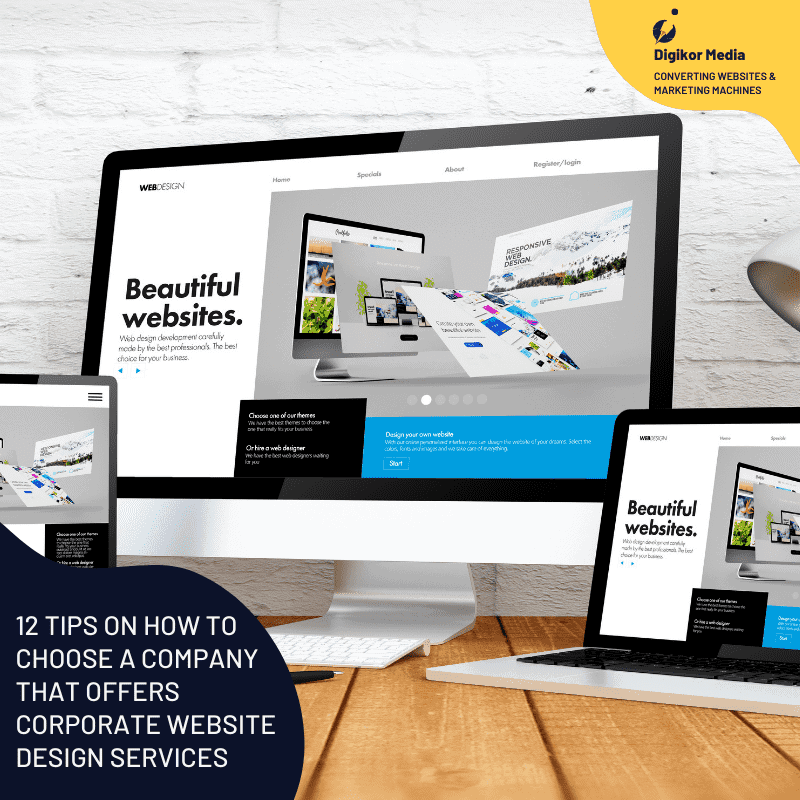
A webmaster is a person who oversees the day-to-day running of a website. Because of their complete control over everything on the website, including software and day-to-day content, the role is commonly called administrator. A webmaster for a small website is the person who creates content, responds to emails and makes any changes to web pages. However, this doesn't mean that all small-scale website owners are webmasters.
Job duties
Webmasters are responsible for the website's content including design, navigation, programming, and programming. He or she is responsible for maintaining the website's functionality and appearance. They also ensure that it loads quickly and is compatible with all browsers. These professionals can also monitor and develop features to track visitor activity. Although webmasters are usually employed by a company, their responsibilities may vary.
The webmaster's other duties include monitoring traffic, site usage, and updating website content to make it attractive to visitors. Webmasters have to know how to use the latest technologies and which ones will be beneficial for their clients' sites. Webmasters need to be aware of the latest technical standards and fluent in many languages. These languages include HTML or XML. Here are some of your duties as a webmaster.

Skills required
A webmaster must have extensive technical skills. This includes extensive knowledge of Unix and multiple programming languages. They must also be able manage data and websites. Webmaster skills will vary depending on what company or individual they are working for, but typically they include strong writing and verbal communication skills as well as computer literacy and experience in web design development and hosting. In addition, webmasters are typically responsible for content production and publication, and have a strong understanding of SEO (search engine optimization).
To ensure the website's accessibility, a webmaster must be aware of technological changes. Keeping track of traffic, website usage, and bugs is a critical part of the job. It is essential that a webmaster stays current with the latest technologies and knows which ones will benefit a client's site. Webmasters must be willing and able to invest a lot of time studying these topics. The webmaster must be able learn and keep up to date with a variety technology, such as PHP, JavaScript or XML.
Salary
Webmasters can make as much as $60,000 per annum depending on their experience and where they live. These professionals are responsible for a range of tasks such as creating content and linking websites. Webmasters are also able to write code and program web sites. Webmasters can also be responsible for updating existing websites and adding new content, images or managing marketing campaigns. A webmaster may be paid on an hourly basis, while others may be salaried.
Although the salary is relatively consistent across the United States, there are variations. A webmaster with five- to ten year of experience could expect to make seven8,000 US dollars per annum, or 38% more than a Webmaster with two to five. These figures are subject to change and a webmaster who has more than ten years experience can make nearly ninety thousand dollars a year.

Future employment outlook
The employment outlook is positive for webmasters. There is a large, increasing demand for webmasters, and the job market for webmasters will continue to grow faster than the average for all occupations. The rising number of online businesses is fueling the demand for webmasters. In fact, demand has grown by 13% in the past decade. Those concerned about job security should take steps to prepare for the future.
This job is in constant flux as technology advances rapidly. You might be able to spend part of your day researching new developments in online communication. However, you may also be required to program new software and hardware. This job is often full-time but there are some perks to working remotely. A webmaster typically works 40 hours a week. However, some webmasters work up to eight hours per day. Working from home is an option as some webmasters may be on call 24 hours per day.
FAQ
Which platform is best for designing a website?
WordPress is the best platform available for building a website. WordPress offers all the features needed to make a website professional looking.
Themes can be easily customized and installed. You can choose from thousands of free themes available online.
Plugins are another way to add functionality. They can do everything, from adding social buttons to creating contact pages to adding forms.
WordPress is very easy to use. To modify your theme files, you don't need to be able to code HTML. To change your theme files, all you have to do is click on an image and select the desired changes.
There are many other platforms available, but I recommend using WordPress because it's been around for years and is still used by millions worldwide.
How can I make a website for free?
It depends on what type of website you want to create. Do you want to sell online products, start a blog, build a portfolio, or both?
You can make an essential website using only HTML and CSS (a combination of HyperText Markup Language and Cascading Style Sheets). It is possible to make a basic website with HTML and CSS. However, many web developers recommend using a WYSIWYG editor, such as Frontpage or Dreamweaver.
You might consider hiring a freelance designer if you don’t know how to design websites. They will help you design a website that suits your specific needs.
Freelance developers can charge either an hourly or a flat fee. It depends on the amount of work that they do in a given time frame.
One example is that some companies charge $50-$100 for an hour. For larger projects, you'll typically get a higher rate.
There are many websites that list jobs available for freelancers. You can search there before you contact potential developers directly.
What is a UI developer?
Designers of user interfaces (UI) are responsible for creating interfaces for software products. They are responsible for designing the layout and visual elements of an application. Sometimes, the UI designer might also include graphic artists.
The UI Designer should be able to identify problems and solve them.
A UI designer must have a passion about technology and software design. The field requires that the designer understands all aspects of it, from designing ideas to writing code.
They should be capable of creating designs using a variety tools and techniques. They should be able to think creatively and solve problems by creating innovative solutions.
They should be detail oriented and organized. They should be capable of quickly and efficiently developing prototypes.
They must be comfortable working with clients of all sizes. They should be able, and willing, to adapt in different environments and situations.
They should be able and willing to communicate effectively with others. They must be able express themselves clearly and concisely.
They should be well-rounded and possess strong communication abilities.
They must be motivated and driven.
They should be passionate about their craft.
WordPress is a CMS?
The answer is yes. It's a Content Management System (CMS). A CMS allows you to manage your website content from within a web browser instead of using an application such as Dreamweaver or Frontpage.
The best part about WordPress is that it's free! Hosting is all you need, and it's usually free.
WordPress was originally created to be a blogging platform. But WordPress now offers many more options, such as eCommerce sites or forums, membership websites and portfolios.
WordPress is easy to install and set up. Download the file from their website, and then upload it to your server. You can then visit your domain name using your web browser to log in to your new website.
After installing WordPress on your computer, you'll need a username and a password. Once you log in, you will be able to access your settings from a dashboard.
You can now add pages, posts and images to your site. This step may be skipped if you feel confident editing and creating content.
But if you'd rather work with someone, you can hire a professional website designer to handle everything.
What HTML and CSS are available to help me build my website?
Yes! You should be able to create a website if you have been following the instructions.
After you have learned how to structure a website, you will need to know HTML and CSS.
HTML stands as HyperText Markup Language. Think of it like writing a recipe for a dish. It would include ingredients, instructions, as well as directions. HTML can also be used to inform a computer if certain parts of text should appear bold, underlined and italicized. It's the language of documents.
CSS stands for Cascading Style sheets. It's like a stylesheet for recipes. Instead of listing each ingredient and instructing, you can write down general guidelines for font sizes, colors and spacing.
HTML tells the browser how a page should look; CSS tells it what to do.
Don't be afraid to ask questions if you don’t understand any of these terms. Follow the tutorials and you will soon be creating beautiful websites.
Statistics
- When choosing your website color scheme, a general rule is to limit yourself to three shades: one primary color (60% of the mix), one secondary color (30%), and one accent color (10%). (wix.com)
- It enables you to sell your music directly on your website and keep 100% of the profits. (wix.com)
- Is your web design optimized for mobile? Over 50% of internet users browse websites using a mobile device. (wix.com)
- Did you know videos can boost organic search traffic to your website by 157%? (wix.com)
- The average website user will read about 20% of the text on any given page, so it's crucial to entice them with an appropriate vibe. (websitebuilderexpert.com)
External Links
How To
How to use WordPress as a Web Designer
WordPress is a free software tool that allows you to create websites or blogs. The main features include easy installation, powerful theme options, plug-ins, and many others. You can customize this website builder to suit your needs. It includes hundreds of themes, plugins, and other tools that can be used to create any type of website. If you'd like, you can also add your own domain. These tools allow you to easily manage the appearance and functionality of your website.
WordPress can help you create stunning sites even without knowing how to code HTML. It doesn't matter if you don’t know much about coding. You can create a beautiful website in no time. We'll walk you through how to install WordPress on your PC and show you the basics of getting your blog online. We'll walk you through the process so you can understand it at home.
The most popular CMS (Content Management System) out there is WordPress.com currently has around 25 million users worldwide and counting. There are two versions available for WordPress. You can either buy a monthly license or download the source codes and host it yourself for $29 each month.
WordPress is an excellent blogging platform for many reasons. One reason is that WordPress is extremely easy to use. Anyone with a basic knowledge of HTML can create a stunning site. Another benefit is its flexibility. WordPress.org provides many themes free of charge. You can easily change the look and feeling of your site without spending a dime. It's also very customizable. Many developers offer premium add-ons that allow you to automatically update posts when someone comments on them or integrate social media sharing into your site.